Our Servals , F1s and F2 parents!

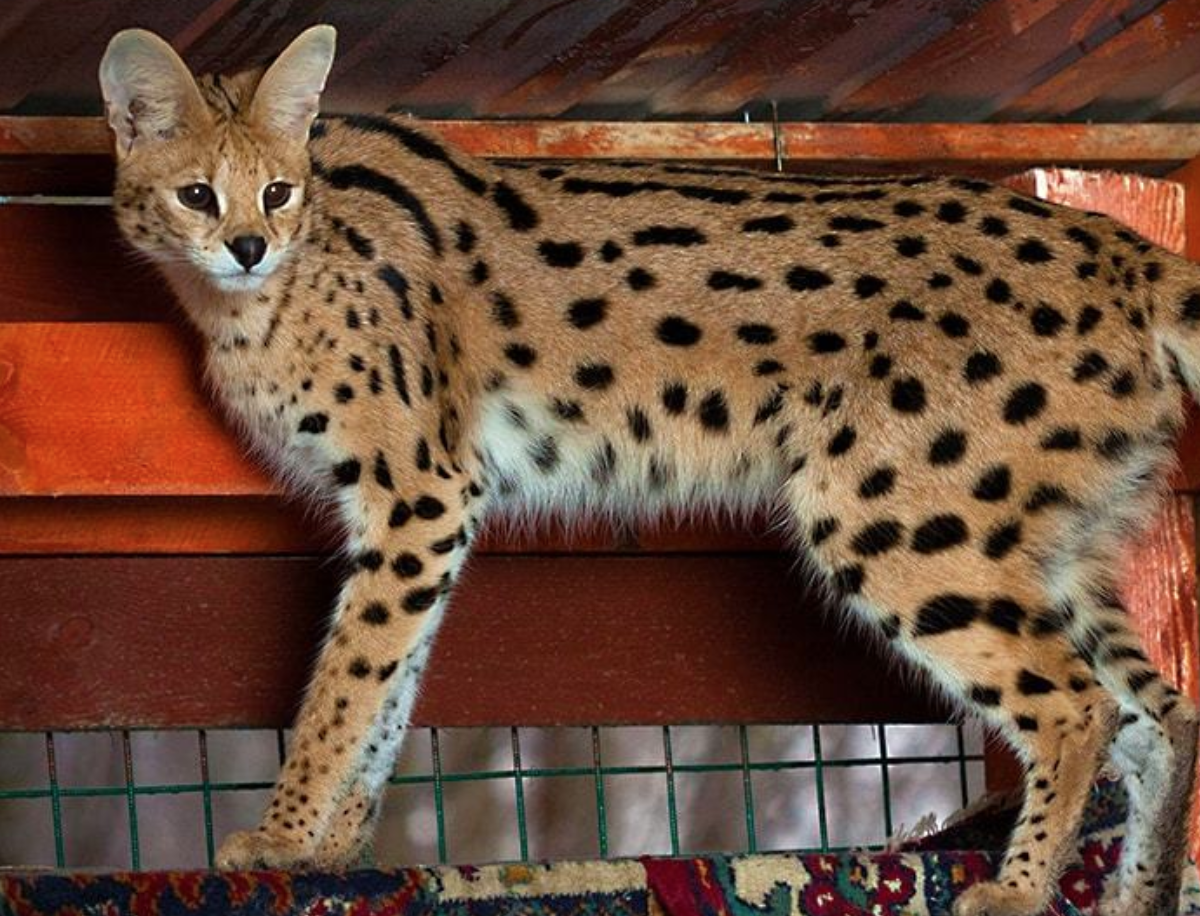
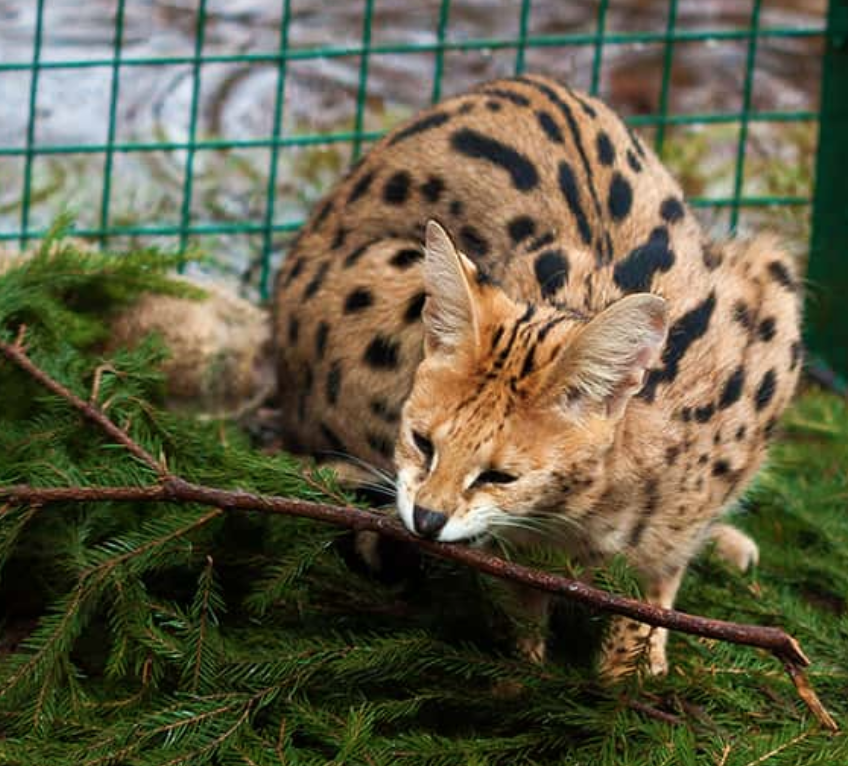

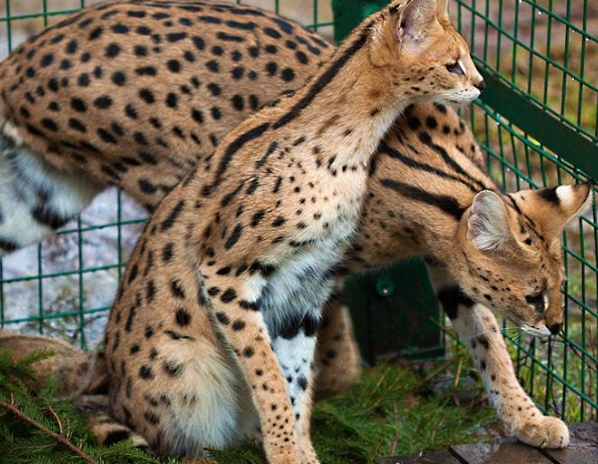
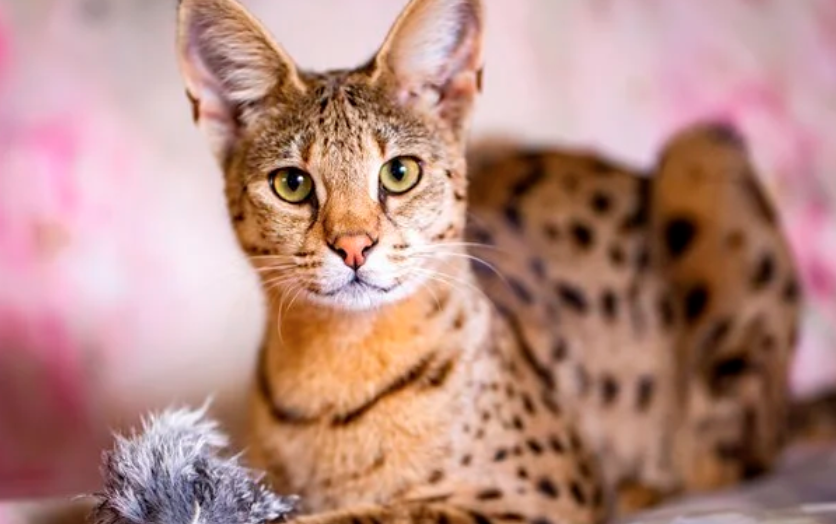
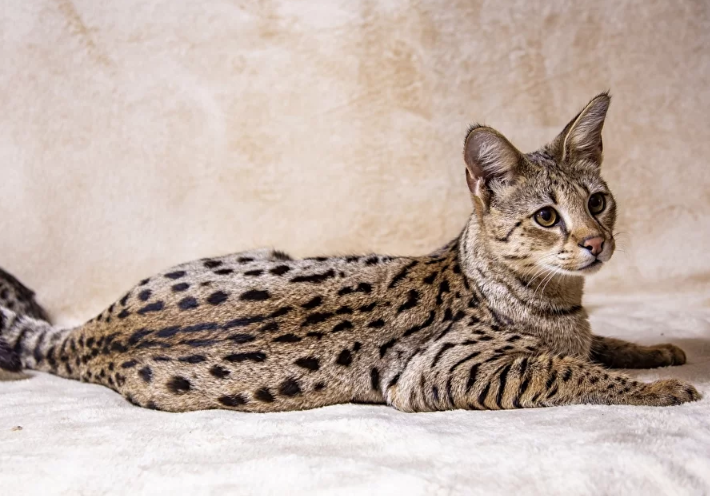
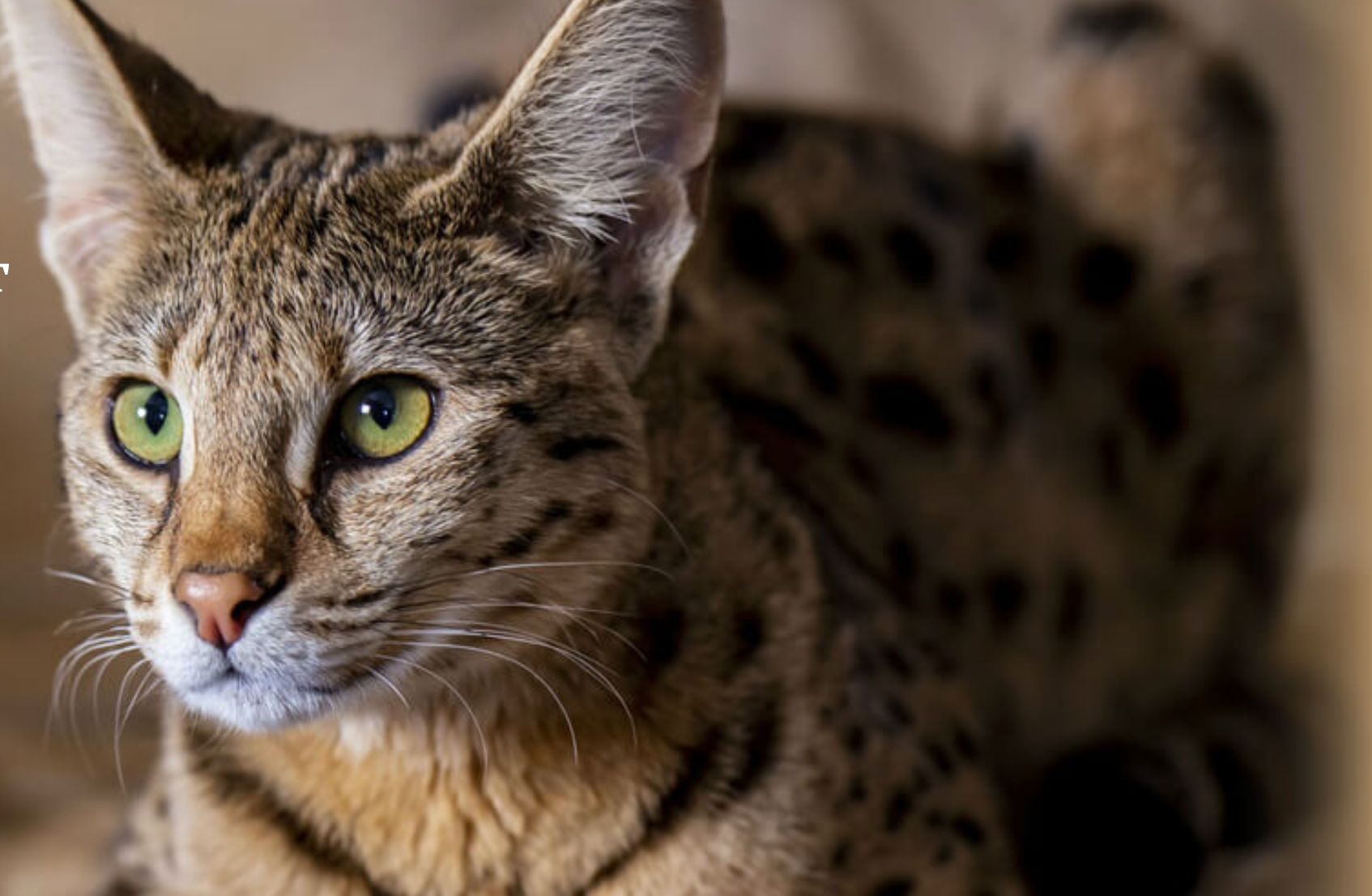
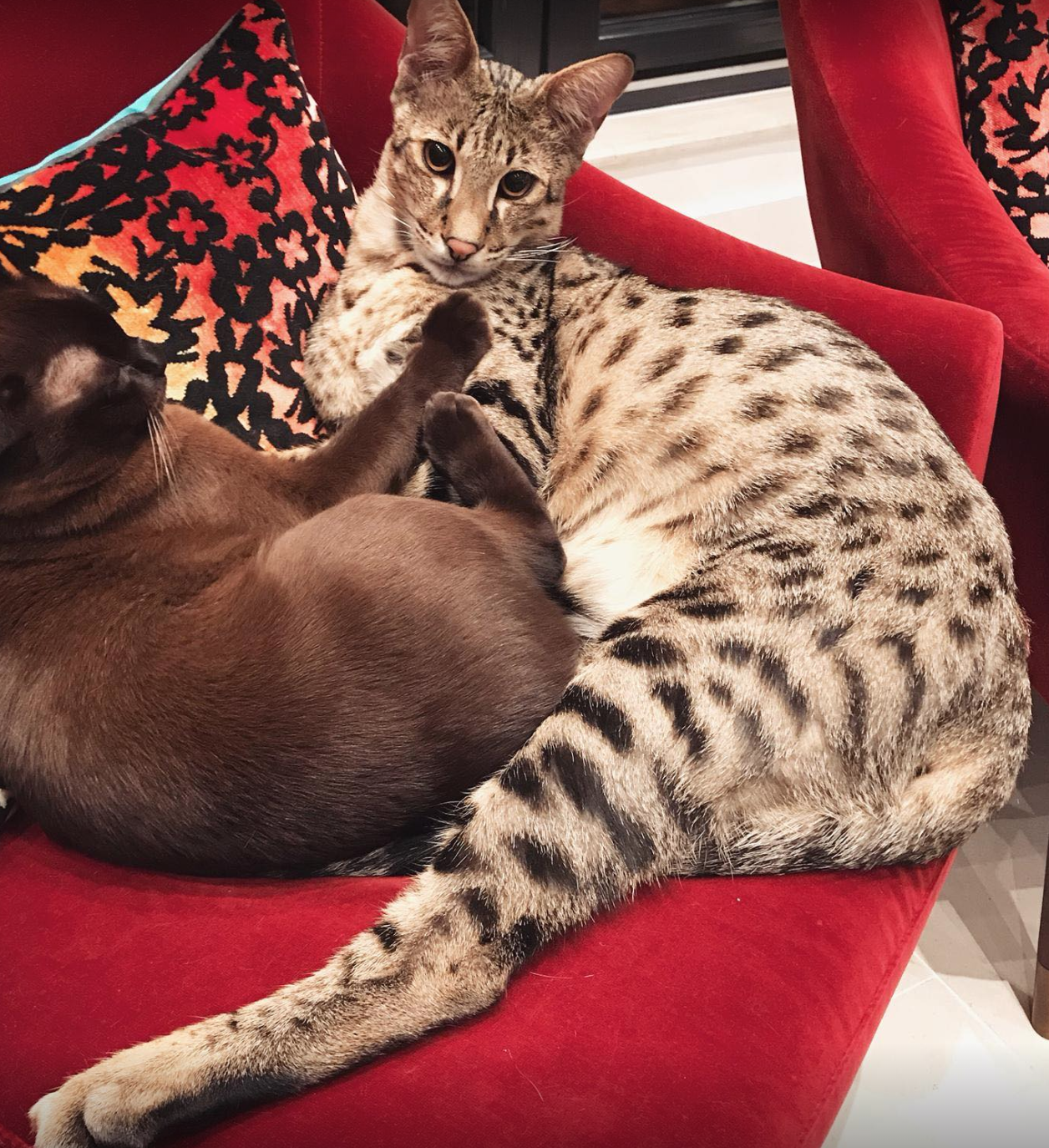
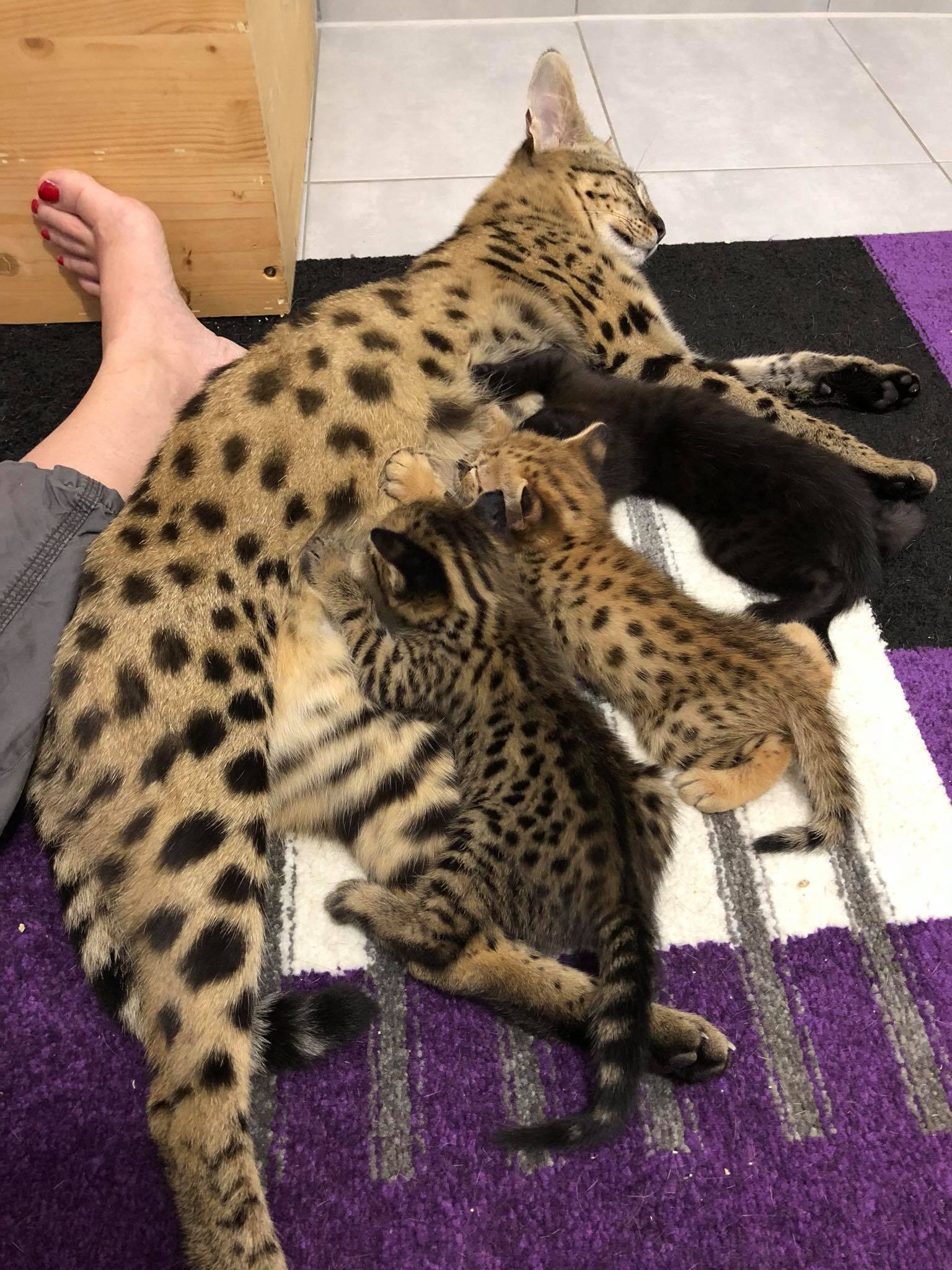
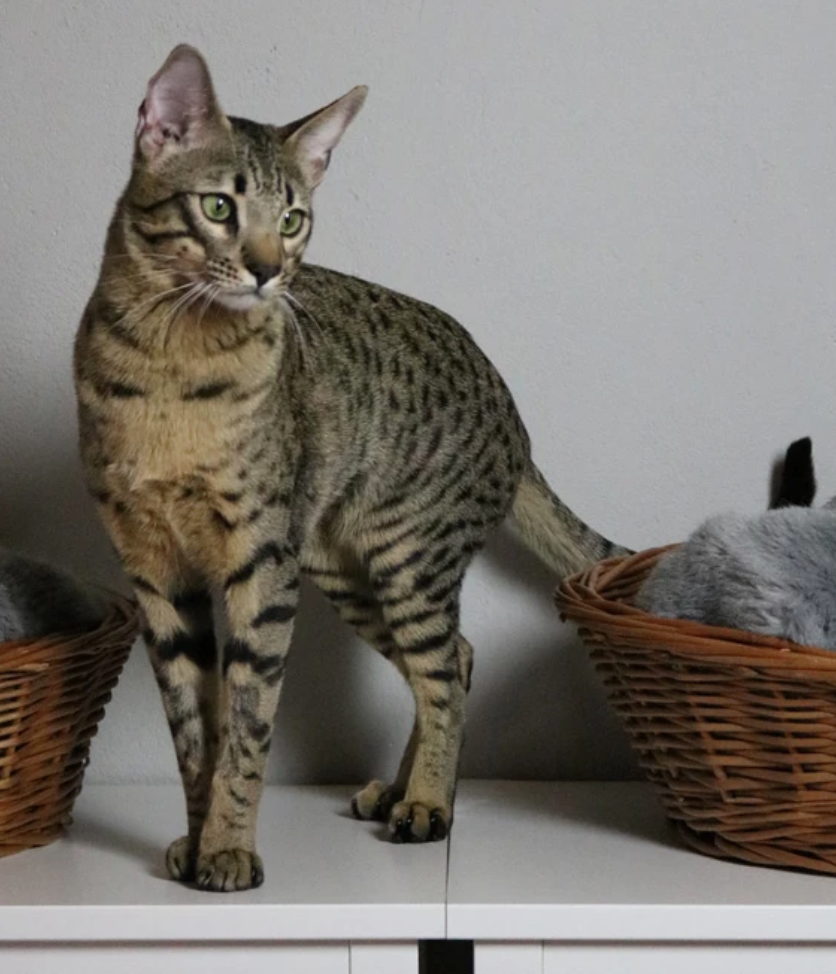
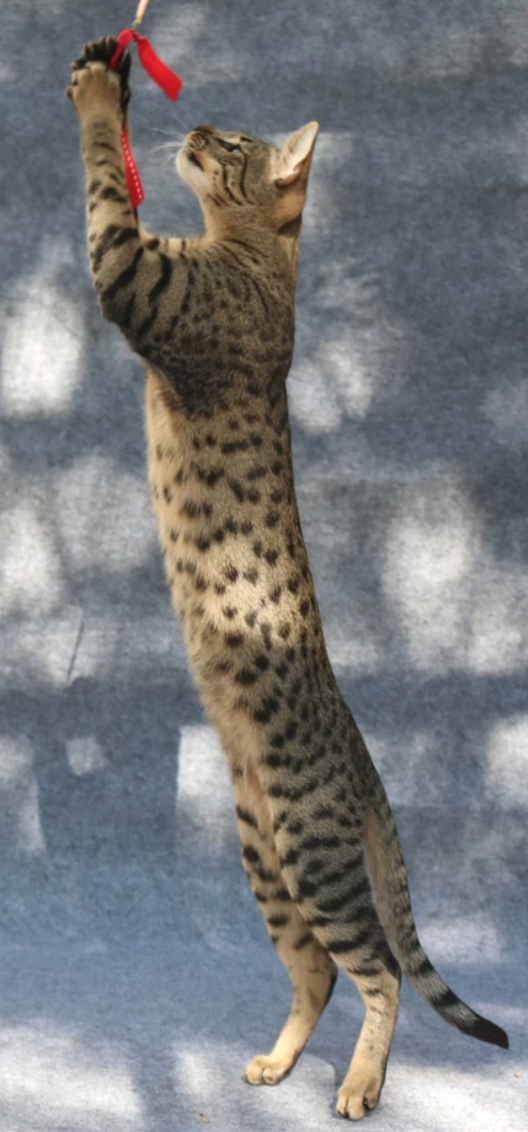
Serval Cat The serval
(Leptailurus serval) /ˈsɜːrvəl/ is a wild cat native to Africa. It is rare in North Africa and the Sahel, but widespread in sub-Saharan countries except rainforest regions. On the IUCN Red List it is listed as Least Concern.[1]
It was first described by von Schreber in 1776.[3] It is the sole member of the genus Leptailurus. Three subspecies are recognised. The serval is a slender, medium-sized cat that stands 54–62 cm (21–24 in) at the shoulder and weighs 9–18 kg (20–40 lb). It is characterised by a small head, large ears, a golden-yellow to buff coat spotted and striped with black, and a short, black-tipped tail. The serval has the longest legs of any cat relative to its body size.
Active in the day as well as at night, servals tend to be solitary with minimal social interaction. Both sexes establish highly overlapping home ranges of 10 to 32 km2 (4 to 12 sq mi), and mark them with feces and saliva. Servals are carnivores – they prey on rodents (particularly vlei rats), small birds, frogs, insects, and reptiles. The serval uses its sense of hearing to locate the prey; to kill small prey, it leaps over 2 m (6 ft 7 in) above the ground to land on the prey on its forefeet, and finally kills it with a bite on the neck or the head. Mating takes place at different times of the year in different parts of their range, but typically once or twice a year in an area. After a gestational period of two to three months, a litter of one to four is born. Weaning occurs at one month, and kittens begin hunting on their own at six months. The juveniles leave their mother at 12 months.
It occurs in protected areas across its range, and hunting of servals is either prohibited or regulated in several countries.
The serval is a slender, medium-sized cat; it stands 54 to 62 cm (21–24 in) at the shoulder and weighs 8 to 18 kg (18–40 lb), but females tend to be lighter. The head-and-body length is typically between 67 and 100 cm (26–39 in).[18] Males tend to be sturdier than females.[19] Prominent characteristics include the small head, large ears, spotted and striped coat, long legs and a black-tipped tail that is around 30 cm (12 in) long.[20][21] The serval has the longest legs of any cat relative to its body size, largely due to the greatly elongated metatarsal bones in the feet.[22][23] The toes are elongated as well, and unusually mobile.[22]
The coat is basically golden-yellow to buff, and extensively marked with black spots and stripes.[19] The spots show great variation in size. Melanistic servals are also known.[22] Facial features include the brownish or greenish eyes, white whiskers on the snout and near the ears, ears as large as those of a domestic cat (but large relative to the size of the head) and black on the back with a white horizontal band in the middle, whitish chin, and spots and streaks on the cheeks and the forehead. Three to four black stripes run from the back of the head onto the shoulders, and then break into rows of spots. The white underbelly has dense and fluffy basal fur, and the soft guard hairs (the layer of fur protecting the basal fur) are 5–10 centimetres (2–4 in) long. Guard hairs are up to 3 centimetres (1 1⁄4 in) long on the neck, back and the flanks, and are merely 1 centimetre (1⁄2 in) long on the face.[21][24][19] The closely set ears are black on the back with a horizontal white band;[19] the ears can rotate up to 180 degrees independently of each other.[22] The serval has a good sense of smell, hearing and vision.[21]
A leucistic serval at Big Cat Rescue[25]
The serval is similar to the sympatric caracal, but has a narrower spoor, a rounder skull, and lacks its prominent ear tufts. The African golden cat is darker, with different cranial features.[19] It resembles the cheetah in its build and coat pattern, though not in size.[21] The serval shares its adaptations to its marshy habitat with the jungle cat; both cats have large and sharp ears that help in locating the prey efficiently, and their long legs raise them above muddy ground and water.[26]
In North Africa, the serval is known only from Morocco and has been reintroduced in Tunisia, but is feared to be extinct in Algeria. It inhabits semi-arid areas and cork oak forests close to the Mediterranean Sea, but avoids rainforests and arid areas. It occurs in the Sahel, and is widespread in Southern Africa. It inhabits grasslands, moorlands and bamboo thickets at high altitudes up to 3,800 m (12,500 ft) on Mount Kilimanjaro. It prefers areas close to water bodies such as wetland and savanna, which provide cover such as reeds and tall grasses.[1][19] In 2014 and 2015, it was recorded in the floodplains and gallery forests of Benin’s Pendjari National Park by camera-traps.[27] In the East Sudanian Savanna, it was recorded in the transboundary Dinder–Alatash protected area complex during surveys between 2015 and 2018.[28]
In Zambia's Luambe National Park, the population density was recorded as 0.1/km2 (0.26/sq mi) in 2011.[29] In South Africa, the serval was recorded in Free State, eastern Northern Cape, and southern North West.[30] In Namibia, it is present in Khaudum and Mudumu National Parks.[31]
